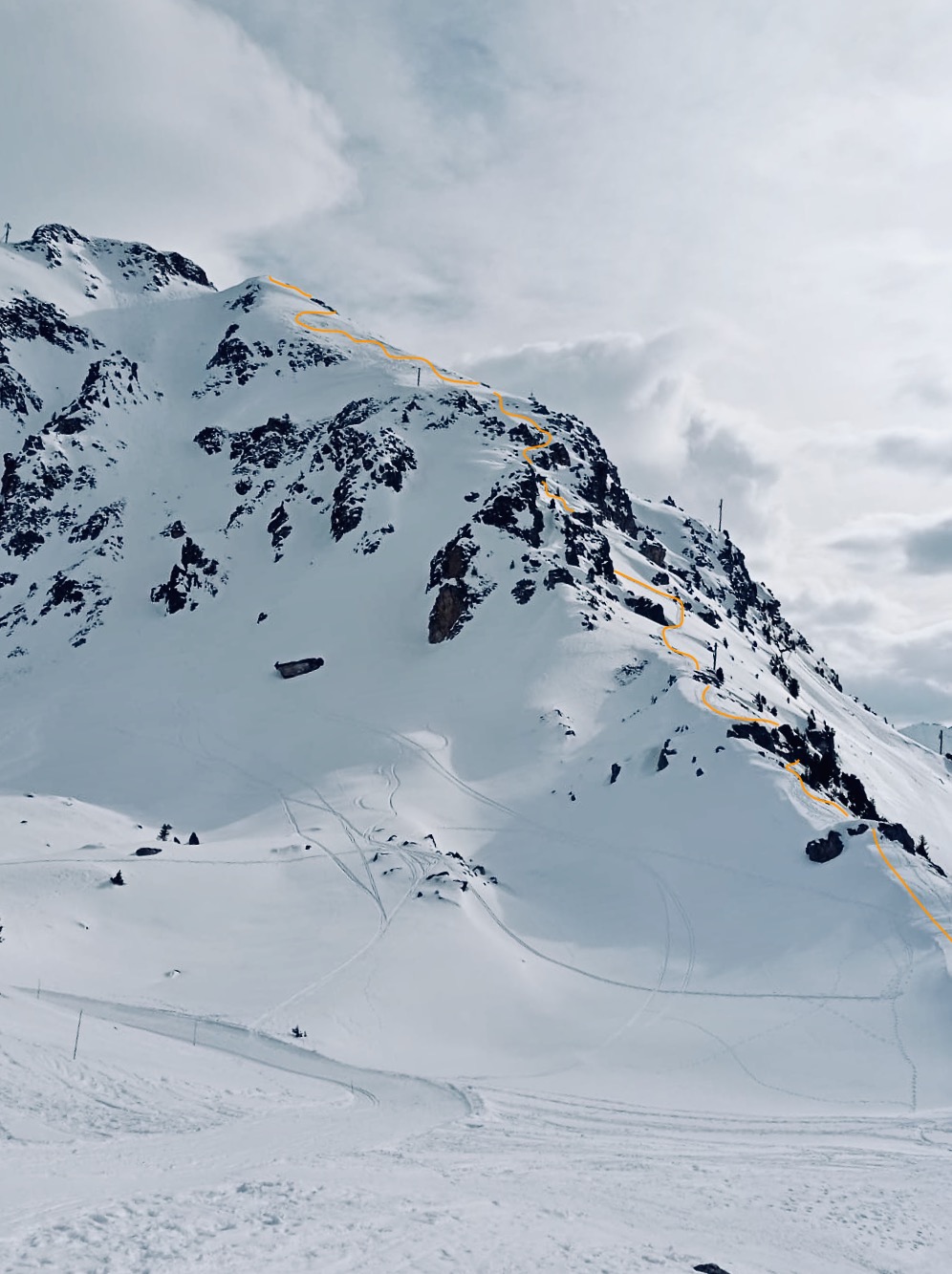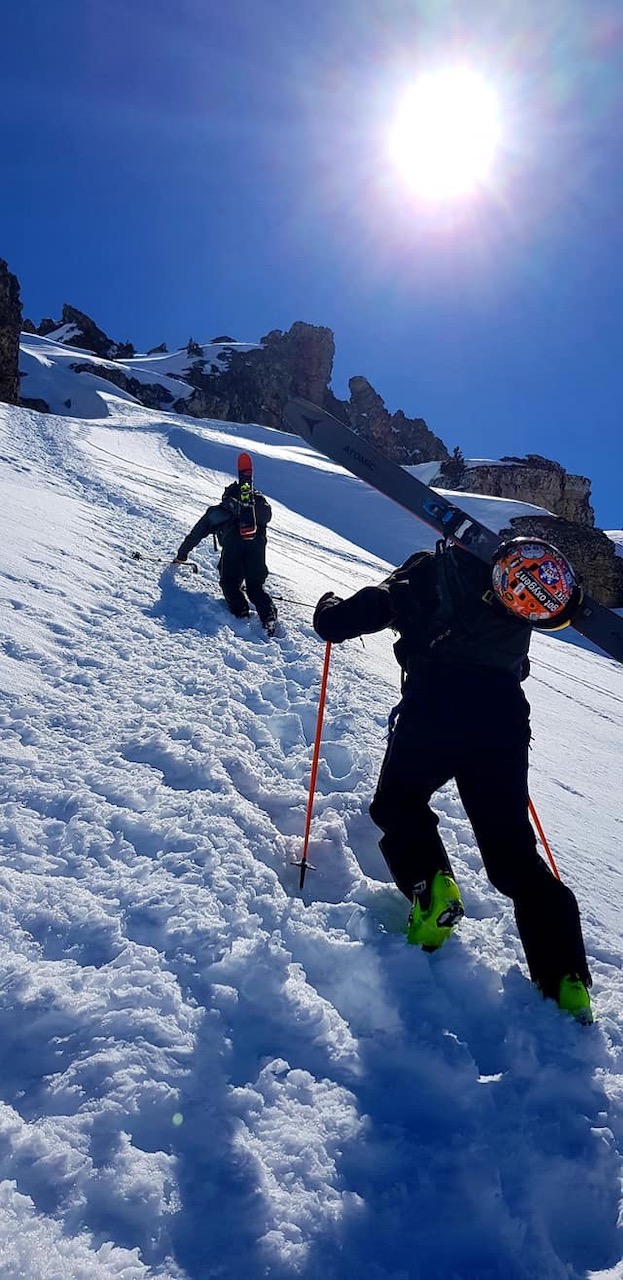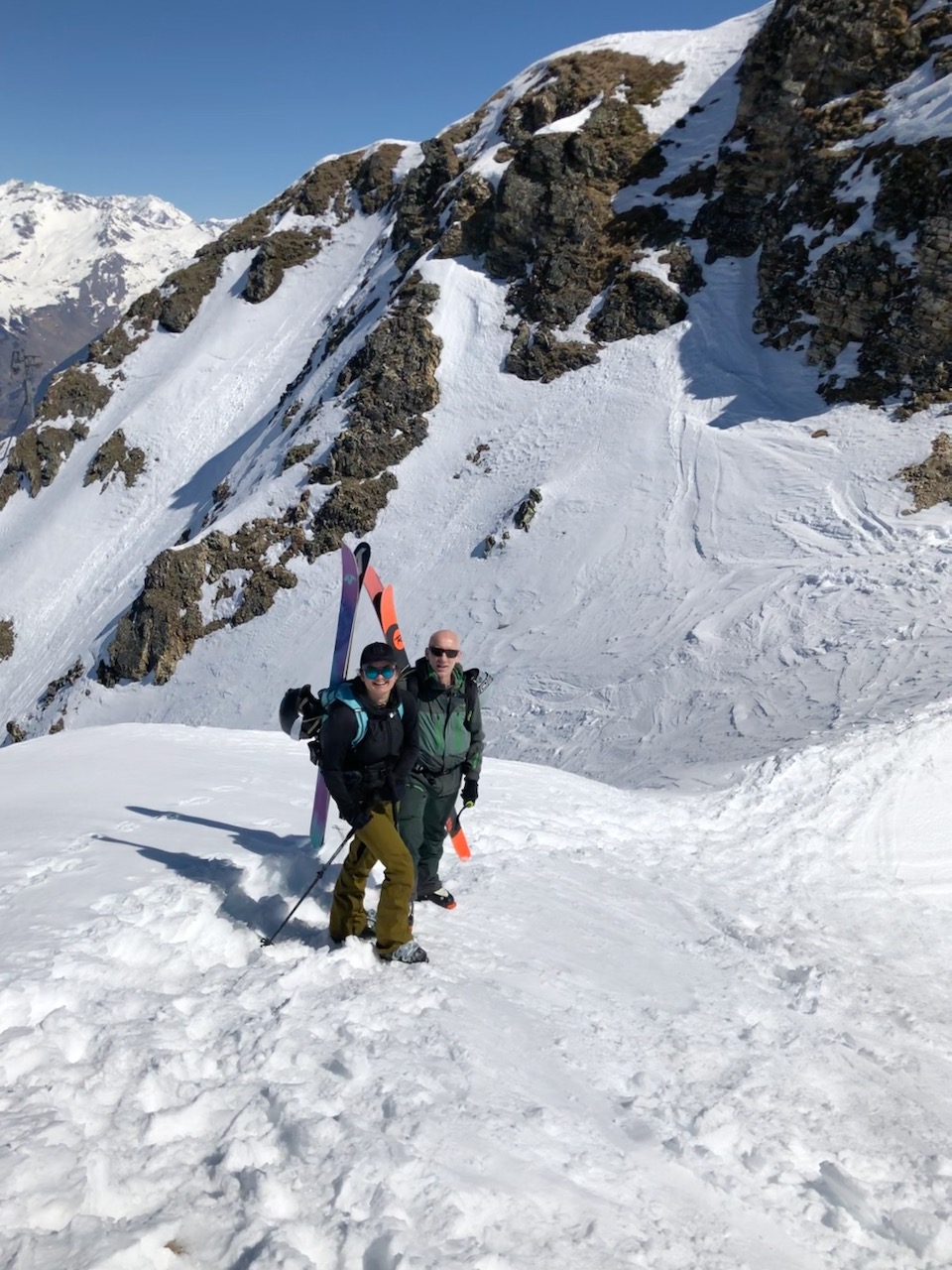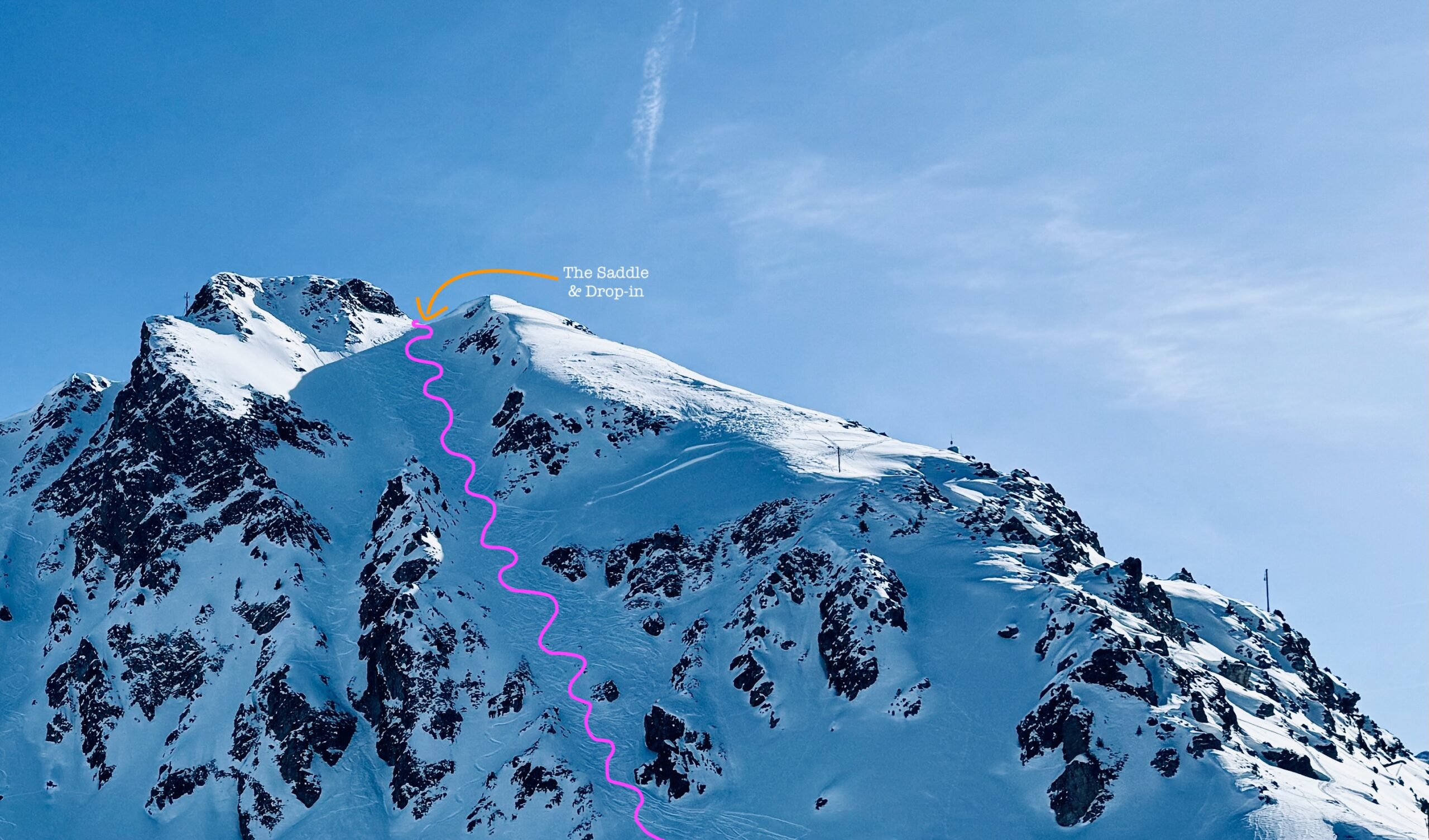

La Tania, France | FreeRide Sector: Rocher de la Loze
Ride Date:
27 Mar 19Snow conditions:
VariableAvalanche level:
3 - ConsiderableTerrain:
Front countryWeather conditions:
SunnyPrecipitation:
ClearElevation entry point:
2480mElevation exit point:
2275mAspect:
North EastMax slope angle:
Over 45 degreesDrop in:
CouloirExit:
Ski outIt’s known as a classic for a reason - under an hour of uphill reaching a great refuelling / transition spot with wonderful views yet the best is still to come. An exhilarating steep but not overly technical couloir ride back to the base of the Rocher de la Loze.
From the top of the 'Dou des Lanches' chairlift head towards 'Méribel'. Almost before the start of the blue ‘Boulevard de la Loze’ piste, leave upwards, riders left and ready yourselves to transition to boot packing (///mortar.squawk.mooing). There are conditions when you’ll be better off skinning but that’s a decision you’ll have to make on the day. Take the path of least resistance to the top of the Rocher de la Loze (///coasters.sweeter.skulk). This is a great spot to transition and refuel before dropping in.
The entry to the 'Face Nord Classic Couloir' is a left turn at the bottom of the obvious saddle feature.
It’s worth taking your time to scope from below, somewhere between the top of the Dou des Launches chairlift and the start of the bootpack will work well. The couloir never feels particularly narrow, so no need to plan where to make your turns in advance, however depending on snow conditions and depth it may be worthwhile noting any exposed rocks or potential bailout spots in case of a slide.
The route out is super obvious - just follow your nose back to the flat area at the top of the Loze and Dou des Launches chair lifts.
What 3 Words entry point
///oily.disavows.entwinedWhat 3 Words exit point
///ears.slithery.diceyFor ascending to the drop in, you can usually choose to bootpack or skin, although this choice will likely be determined by the conditions on the day. There is pretty much always a narrower rocky section about a 3rd of the way up which I’ve always chosen to bootpack, so a pack that is easy to rack your board or skis seems sensible. TSP are must carry items, it also makes sense to confirm your crew are well versed in avalanche rescue. An airbag and helmet makes sense if you have them too.
Even though this isn’t a technical descent and the couloir isn’t that narrow, dropping in felt like a big deal. This was partly due to being unsighted for the first few turns, secondly it felt surprisingly steep at the top but thirdly your initial turns are the first you’ll make after the bootpack and the conditions will likely not be those you felt under your feet on the way up. This is probably because the couloir is a different aspect and somewhat sheltered. Anyhow after those initial turns it becomes more and more likely that you’ll be linking turns and letting your skis run. You may find that it’s over too soon, so it may be tempting (energy levels permitting) to get straight back up and give it another run!
The challenge of the first few turns as described above definitely gives this a boost on the GNAR meter. It feels like a thrill the first time in here, however once your confidence builds and you link turns, the apprehension and adrenaline will probably give way to a wide grin and even a transcendental feeling of serene joy…?
The views are wonderful — you have the usual array of mountains — including Mont Blanc as well as a great view into the Meribel valley. It's worth planning a lunch or snack stop at the transition point to take it all in.

The Ascent (orange squiggle)

Bootpacking in the sun - does black really make you feel hotter? 📷: Joya

Time to transition / have a snack. (Note the saddle feature in the immediate background - turn riders left here into the couloir).

This is it - See previous photo for a better idea of the saddle. 📷: Planker1

The full line in context of the whole Rocher de la Loze north face.
Explore the themes below to find the best home for the content you want to learn about: